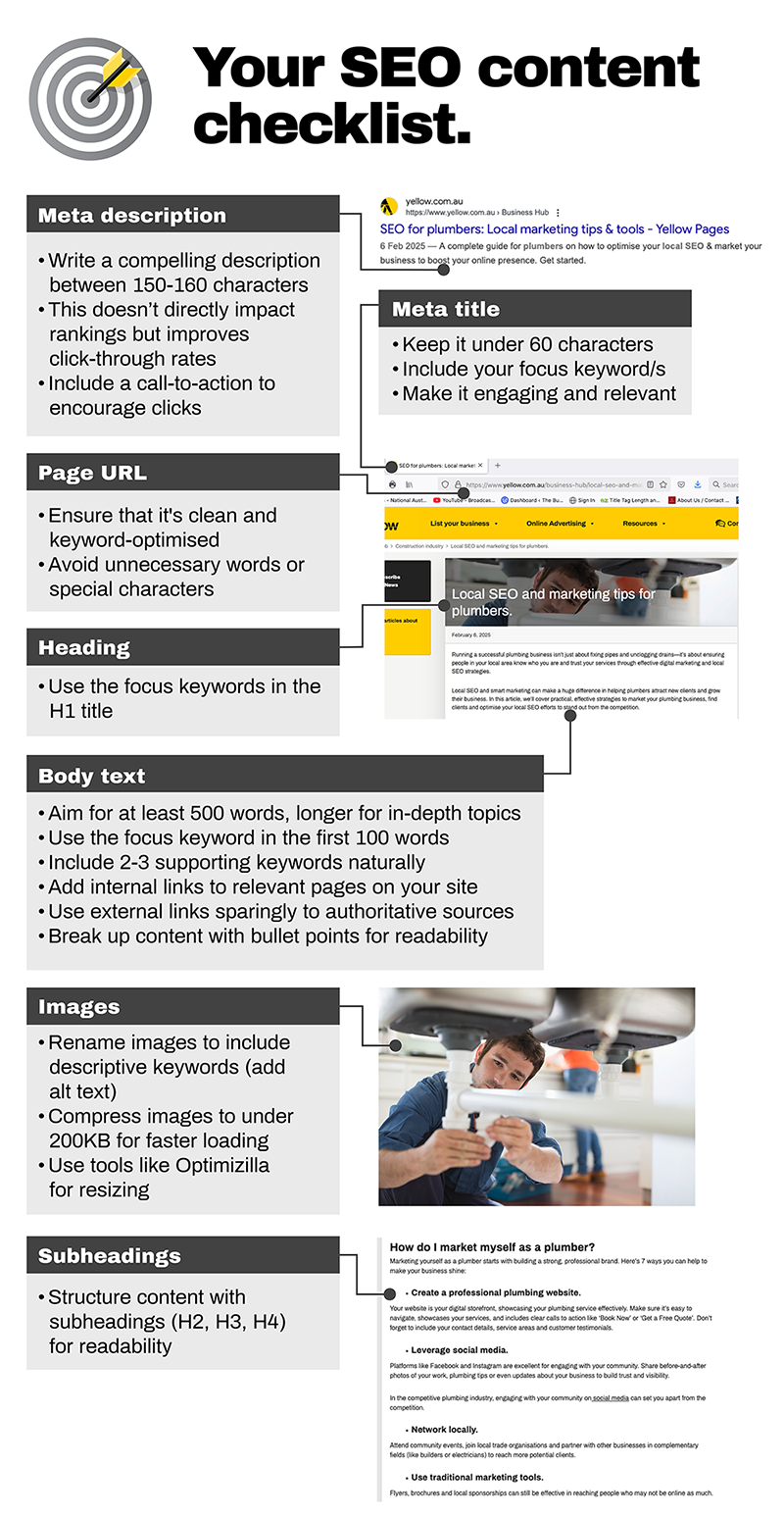With search engine optimisation (SEO) typically taking between three to six months to see results, it’s a good idea to get started on your SEO strategy sooner rather than later. This handy visual guide takes you through the current rules that you should follow to ensure Google’s algorithm picks up your website in organic search results.
Note: You’ll need to have a top-line understanding of the back end of your website, so you know where to add things like metadata and page titles. Or, if you leave your content creation and publishing to someone else, run over this checklist with them to ensure they’re covering all bases.
RELATED: The ultimate 2025 marketing plan template.
Understanding Google’s SEO principles: E-A-T & YMYL.
E-A-T: expertise, authoritativeness, trustworthiness.
Google evaluates web pages based on E-A-T to determine their quality and credibility. To rank well, your content should demonstrate:
- Expertise – Ensure content is created by knowledgeable professionals in the field
- Authoritativeness – Build credibility through high-quality backlinks and reputable sources
- Trustworthiness – Provide accurate, transparent and reliable information.
While Google’s exact algorithm is unknown, factors that may influence E-A-T include:
- The number of authoritative backlinks pointing to your content
- The longevity and consistency of content publication
- Content relevance and alignment with user search intent
- Engagement metrics, such as time spent on the page
- External profiles like Google Business Profile and Yellow Pages that establish brand legitimacy.
RELATED: What is the best SEO strategy for small businesses?
YMYL: Your money or your life.
Certain topics require extra scrutiny from Google’s algorithms due to their potential impact on a person’s well-being, finances, or safety. These are classified as YMYL topics and cover areas such as:
- News and current events
- Government and legal information
- Finance and investment advice
- Health, safety, and medical information
- Major life decisions (e.g., home buying, education choices).
Content that falls under YMYL guidelines must meet the highest E-A-T standards to avoid negatively affecting search rankings. Ensuring accuracy, transparency and user trust is essential.
SEO content that stands out.
With countless SEO guides and checkers available, the core principle remains simple: create valuable content for your audience.
Instead of keyword stuffing, focus on:
- Crafting fresh, informative, and relevant content
- Using keywords as insights into user search intent, not just ranking tools
- Structuring content clearly to enhance readability and engagement.
Quality content should always be:
- Clear and easy to read – Avoid jargon and overly complex language
- Well-structured – Use headings, bullet points and short paragraphs
- Insightful and relevant – Address users’ questions effectively
- Original – Provide unique perspectives that differentiate your brand.
RELATED: 11 free SEO tools to simplify your marketing strategy.
The team at Yellow Pages provides expert digital marketing advice and products that boost your business’ online presence. From an online listing to digital display or social media ads, we’ll tailor a digital marketing strategy designed for your business. Find out more.

